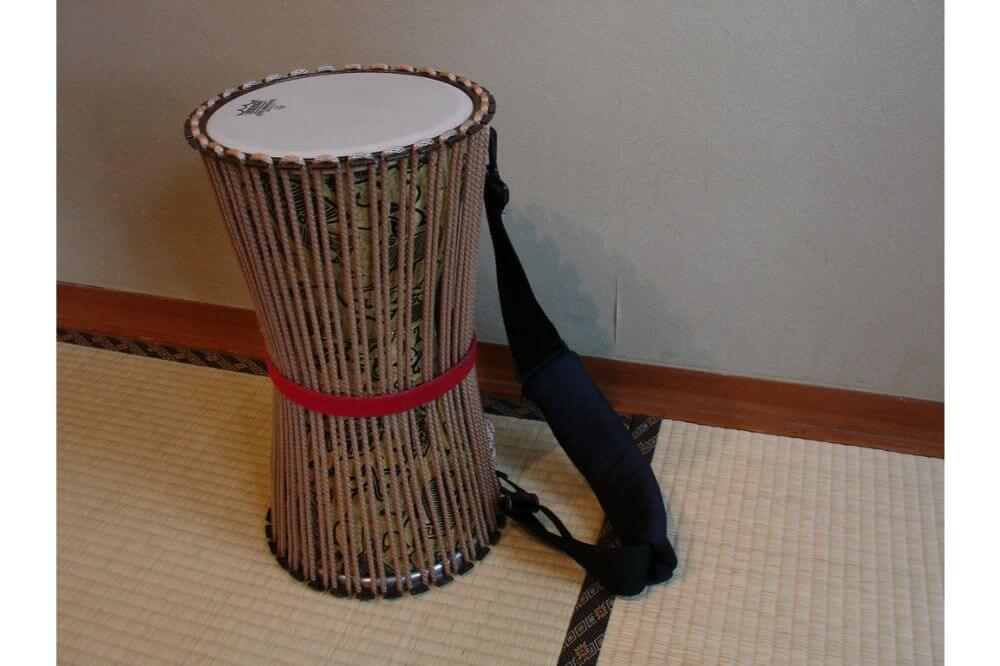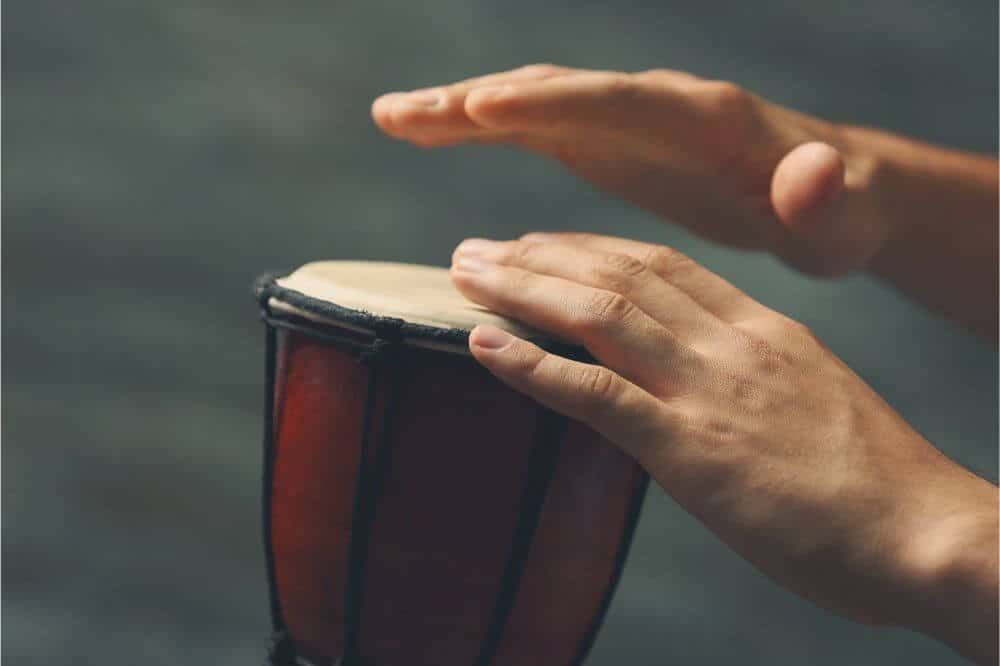No matter your age, learning something new can be fun while at the same time challenging, but in our view, overcoming the challenge adds to the fun.
That theory also applies to learning how to play a musical instrument, and that is why we thought it would be fun for us to write about how to play the talking drum, especially for beginners.
If you have never heard of a talking drum or are unsure what one is, we will explain. However, before we go any further, do not let its name conjure up ideas that you will have conversations with the drum.
We will precisely explain how they are constructed, which plays a huge role in playing a talking drum. We will also give you a quick lesson on how to play talking drums for beginners.
What is a Talking Drum?
The most obvious question we need to answer is why this particular musical instrument is called a talking drum.
It is a drum and one where there is evidence that it has been played for an incredible 14 centuries. Talking drums are primarily from countries located in West Africa, and as such, the name differs from country to country.
Even within a country, the talking drum is known by many other names due to the various spoken languages. Regardless of any specific name across the many languages in Africa, we know it in English as the talking drum for a very particular reason.
When it is played, the tones and sounds produced by the drum are similar in nature to those made by the human voice.
By that, we do not mean that you could have the drum make a speech on your behalf. Instead, it produces sounds that can mimic speech to the extent that by playing a series of specific sounds, they can be interpreted by someone familiar with the sounds the drum can make.
How Talking Drums are Made
Today, if you want to buy a talking drum that is truly capable of reproducing the desired sounds, you want one which has been hand-made and constructed from natural materials.
Some are manufactured using other types of materials, and it is fair to say they are of very high quality. However, a real talking drum has been individually made by hand.
The drum consists of three main components: the shell, the drumheads, and the rope or cord verticals, and each of these plays a vital role in its use. The drum’s main body is typically made from natural wood, and this is usually a single piece of wood.
Many talking drums are hourglass-shaped, which is narrow in the middle and widens at the ends.
On each end are the drumheads, which invariably are made from genuine goat’s skin. These goat’s skin drumheads are pulled tight across each end, and then multiple ropes are added. However, on some drums, these might be leather cords.
The cords or ropes run vertically from one end of the drum to the other, and they are threaded through several holes located around the outer edge of the drumheads.
Although we said there were three drum components, a fourth is needed to play it, called a beater or striker. This is usually a piece of wood that is shaped to form a handle at one end and then curved at the other end where there is a thick flat area which is the piece that makes contact with the drumhead.

Preparing to Play the Talking Drum
Talking drums are made in various sizes, and this is one consideration you need to make before you purchase one. The reason is that to play it, you hold the drum under your arm. For those who have small arms, or if the drum is being bought for a child, a smaller drum size may be more suitable.
In most cases, you will play the talking drum while standing, and if you are going to be playing and practicing for some time, having an oversized drum will be more challenging to use.
There are no hard and fast rules regarding which arm holds the drum and which holds the striker. The best advice is to use the hand which feels the most comfortable to hold the striker, and often that will be the hand you write with.
With the striker in one hand, place the drum under your other arm, and you want to have the center of the ropes or cords roughly in line with your ribs and your biceps.
How to Play a Talking Drum
Now that you are ready, it is time to practice playing. The first thing we say is, do not be too hard on yourself if you struggle to begin with, and do not expect to hear the drum ‘talking’ immediately.
There are two elements to how you play the talking drum, with the simplest being striking the drumhead with the striker. The aspect that makes the drum’s tones change is when you squeeze or release your hold on the drum so that the ropes or cord stretch or contract.
As they do so, this is altering the drumhead’s tautness, and thus when you strike it, it will make different sounds. It is this series of sounds that produce the sounds we call ‘talking.’
To produce higher-pitched sounds, squeeze the drum and ensure that you strike as close to the drumhead center as possible. You again strike the center for lower tones, but you want to be relaxing your grip on the cords.
Continue to practice squeezing and releasing, and you will get a feel for exactly how much pressure you need to produce a specific sound. Next, try to create a series of tones starting with two, then three, and so on; it makes sounds that go together.
Ultimately if you keep practicing, you should get to the point when you can actually hear the drum talk and maybe even say a phrase.

